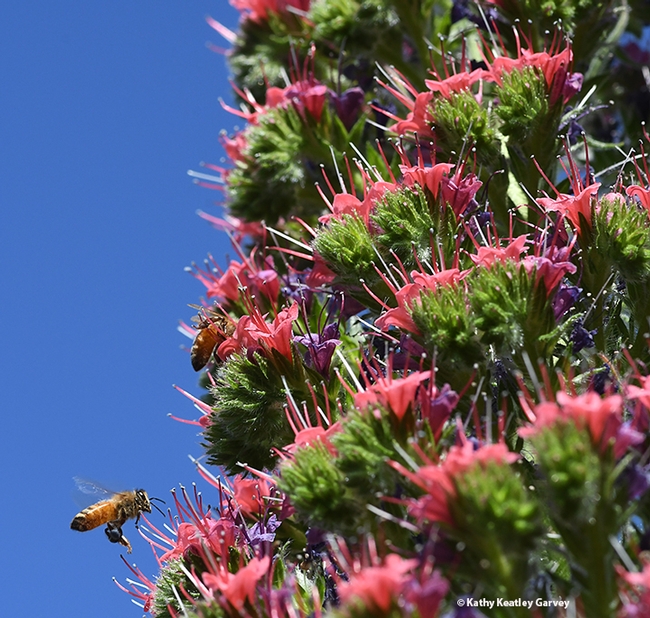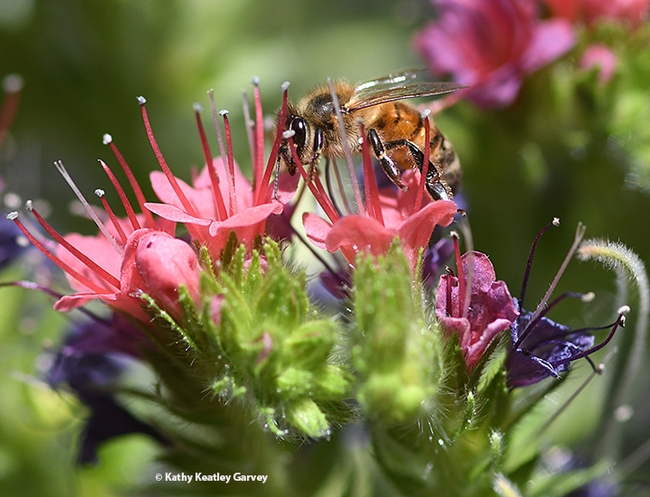Christmas in May?
When it's in full bloom, the aptly named "tower of jewels," Echium wildpretii, which can tower as high as 10 feet, looks very much like a Christmas tree. Think of the brilliant red blossoms as red bells.
Native to the island of Tenerife, it belongs to the family Boraginaceae. It's a biennial, meaning that it takes two growing seasons to complete its life cycle. In the Vacaville, Calif., area, it blooms in its second year, around mid-April and diminishes by mid-May.
Honey bees love its nectar and pollen. And the pollen? It's blue, which is always a surprise when beekeepers open their hives. "Where did that blue come from?"
Scilla sibirica (wood squill) and Epilobium angustifolium (fireweed) also yield blue pollen as does Gilia tricolor (bird's eye). Borage pollen is a bluish-gray.
"The importance of pollen to the health and vigor of the honey bee colony cannot be overstated," writes emeritus entomology professor Norman Gary of the University of California, Davis, in his best-selling book, "Honey Bee Hobbyist, The Care and Keeping of Bees."
"Honey satisfies the bees' carbohydrate requirements, while all of the other nutrients---minerals, proteins, vitamins and fatty substances--are derived from pollen. Nurse bees consume large amounts of pollen, converting it into nutritious secretions that are fed to developing larvae. During an entire year, a typical bee colony gathers and consumes about 77 pounds of pollen."
Gary adds: "Pollen in the plant world is the equivalent of sperm in the animal world. Fertilization and growth of seeds depends upon the transfer of pollen from the male flower parts (anthers) to the receptive female parts (stigmas)."
Attached Images:

